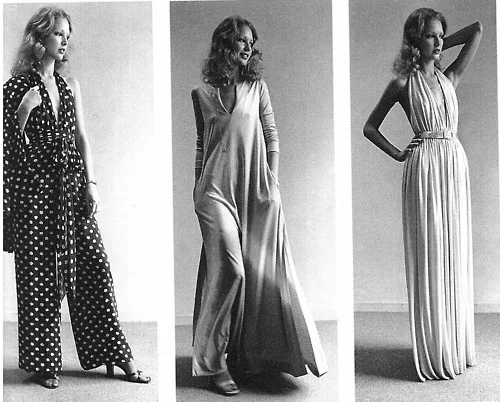The Art of Draping
The process of clothing design can be mysterious. Nearly everyone has seen designer's sketches. But how do we go from sketch to final product? Two methods make up the process -- Draping and Flat pattern drafting. Both are dedicated to turning fabric into garment, and can be used individually, or together to realize a design.
Draping has always been a my preferred method of design - it's similar to painting- with scissors and fabric as your tools. It can be gestural, unpredictable, and emotionally driven. The beauty of draping is taking fabric, and wrapping it onto a dress form to see how it molds and reacts to the body's curves. Each fabric has many different characteristics which cause it to hang, drape, and stretch in a particular way. Designers throughout fashion history have furthered the exploration of shape and fit using this method. Favorites include Madeline Vionnet, Cristobal Balenciaga, and Halston. But we can see draping in historical fashion from Egyptian, to Grecian to Japanese.
Designs draped by Halston
In contemporary fashion there are basic parameters to draping. Take a piece of fabric suited to your desired garment size, and mark its grainlines for reference. To start, use pins to anchor the fabric to the dress form, then clipping with scissors, trim fabric into a shape fitting your design. After creating front and back pieces you've got an idea of it's shape and look. There's plenty of correcting and, balancing that happens to refine this first version.
The process is sculptural in approach, and allows designers to fully visualize their design as a 3-Dimensional object at an early stage in the fabrication process. It's often a method more suited to creative, and unexpected looks.
This Christmas, I was gifted an amazing book called, " Draping The Complete Course" by Karolyn Kissel. A master draper and designer based in LA, and professor at Woodbury University in Burbank (where I taught last semester as an adjunct professor. ) Her book starts with the basics and terminology, continuing on to advanced techniques, and it comes with a tutorial DVD. I fully intend to practice her suggested projects.
Another favorite reference is the large scale hardcover titled, " Madeline Vionnet" by Betty Kirk. It's photography, and patterns show how Vionnet achieved her ingenious designs using draping.


